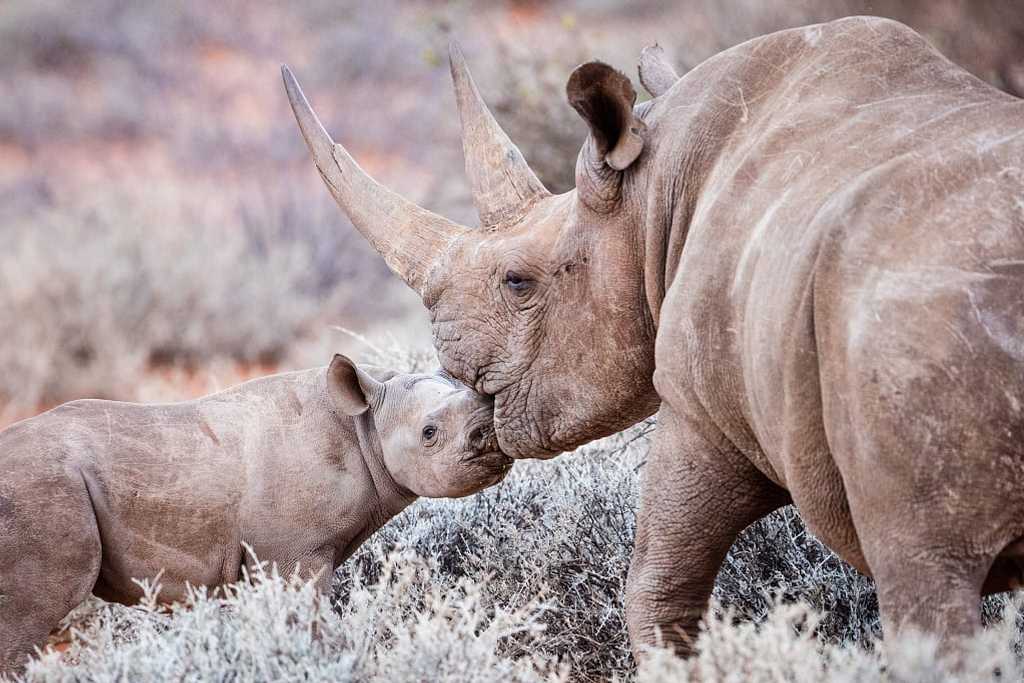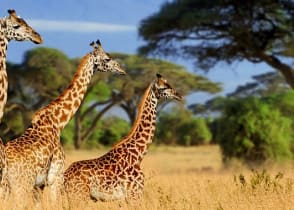6 Ways to Protect Endangered Rhinos on Your Next Safari

Viewing an endangered rhino in the wild is one of the most sought-after safari experiences and there are six ways to make sure you do not inadvertently help poachers find their next target during your African safari.
Finding a rhino in its natural habitat captures the animal’s surprising grace and fantastic size, but poachers can use information from your photos to find the animals in the wild. When on safari, you want to photograph as much of the wildlife as possible for your memories and to share the experience with your family and friends.
Social media may provide you with an immediate connection to do so, but comes with an ecological cost that you can avoid by learning how to project the necessary wildlife during and after your trip.
A Little About the Numbers
From 1970 to 2000, the world’s rhinoceros population dropped by over 90 percent for a variety of reasons, such as civil wars, political instability, corruption, and widespread poverty. Some Eastern cultures have strong yet fabled beliefs that rhinoceros horn has curative properties that reduce fever, cure cancer, or serve as an aphrodisiac, fuelling the supply-and-demand atrocities of poaching.
Scientists have studied the genetic makeup of rhino horns, finding them to have no medicinal value. Instead, they are made of keratin, the same substance in hair and fingernails. Almost all black and white rhinos can be found in the southern African countries of South Africa, Botswana, Zimbabwe, and Namibia, with Kenya and Tanzania offering the opportunity to see them too.
With intensive anti-poaching initiatives and the support of safari-goers worldwide, an encouraging 5.2% increase in the number of rhinos was recorded at the end of 2022. It is still believed there are approximately 6,000 black rhinos and 18,000 white rhinos in existence today.
What is Geotagging & What Should You Know?
When on safari in Africa, you should photograph the splendors during your game drives. However, take a moment to consider what measures you can take to protect black and white rhinoceroses from poachers. The advanced technology of digital cameras, whether on your smartphone or stylish DSLR, has made the geotag function nearly ubiquitous.
Geotagging automatically embeds into the picture the geographic information of the specific location in which the photograph was taken. This data is then used in tandem with applications figuring longitude and latitude. This information is easily accessible on the internet, giving poachers the approximate spot from where you took the memorable picture. Sophisticated poachers can determine the position of a rhino based on markers from the landscape, such as a grove or mountain peak in the background.
Stringent Methods to Save Rhinos
More and more national game parks and reserves in less populated wildlife regions and those with safe borders and vigilant game ranging have opened to receive rhinos from areas where threats and poaching are more intense. This has helped increase the preservation of rhinos in Africa.
Another effective method of saving rhinos has been rhino dehorning. The practice may seem quite extreme, but the results have been positive in that with the horn removed, the reason for attacking and killing a rhino is no longer necessary. In these instances, poachers leave the rhino alone and quickly leave the area.
Supporting Rhino Conservation
Going on safari is an adventure of a lifetime as you explore parks and reserves seeking out that perfect setting and angle for that one-of-a-kind photographic shot. What makes it even better however, is that when you embark on certain safaris, some proceeds from your booking go to rhino conservation organizations.
Supporting such projects is truly valued, giving researchers and conservationists the opportunity to protect and sustain the rhino population and their habitat throughout southern and eastern Africa. Local communities also benefit and get involved in ensuring wildlife habitats, in general, are safe. The more people out on a game drive, the fewer chances poachers have of not being seen or making their move.
Tips for Remaining Vigilant When Viewing Rhinoceros on Safari
To help protect rhinos during your safari adventure, while still capturing photos for friends and family back home, take the following precautions:
- Disable the geotag function from your smartphone or camera. The feature is found in the “settings” section of your phone and takes away the ability for others to view the longitudinal and latitudinal coordinates where your photo was taken.
- Strip out GPS information from previously taken photos. This erases the information and other metadata related to the date and time in which the photo was taken.
- Do not mention your location in the photo or the photo gallery on social media. By keeping the title of the gallery vague, such as “My Safari Trip”, instead of using specific names like “Our Trip to Kruger”, you can keep poachers from learning the exact whereabouts of the rhinoceros you saw during the excursion.
- If you are organized and label your photos with the specific names of the destinations at which they were taken, be sure to rename the file so others do not know which national park or game reserve you found a rhino.
- As hard as it may be, consider not posting any photos with rhinos in them, focusing on some of the other incredible wildlife sightings you may have experienced during your safari. You can share your rhino experience with friends and family around a barbeque or campfire perhaps, safe from the prying eyes of poachers.
- Share the importance of helping conserve rhinos simultaneously when uploading your photos on social media. Use the power of your experience to bring awareness to your family and friends about the struggle to protect rhinos across Africa and what they can do to help. Keep donating!
Discover How to See Rhinos on Your Safari
The rhinoceros is part of the “Big Five” and it is hard to think of their possible extinction in years to come. Paying attention to the threat to their existence while on a game drive can go a long way in helping conserve the animals.
Find tips for your safari experience in our Africa safari travel guide or inspiration for your trip with featured African safari tours and vacations.
Life-Enriching Travel Designed Just for You
- 1
Trips curated by the world’s top destination experts
- 2
Concierge-level service leading up to and during your trip
- 3
Unique, exclusive experiences and insider access

